Five Greatest Predictions of Cosmic Inflation
This is no longer a speculative theory, since four of them have been confirmed.
Scientific ideas should be simple, explanatory and predictive. And as far as is known today, the inflationary multiverse does not possess such properties.
- Paul Steinhart, 2014
Thinking of the Big Bang, we imagine the starting point of the Universe: the hot, dense, expanding state from which everything came. Noticing and measuring the current expansion of the Universe - galaxies flying apart from each other, we can not only determine the fate of the Universe, but also its beginning.
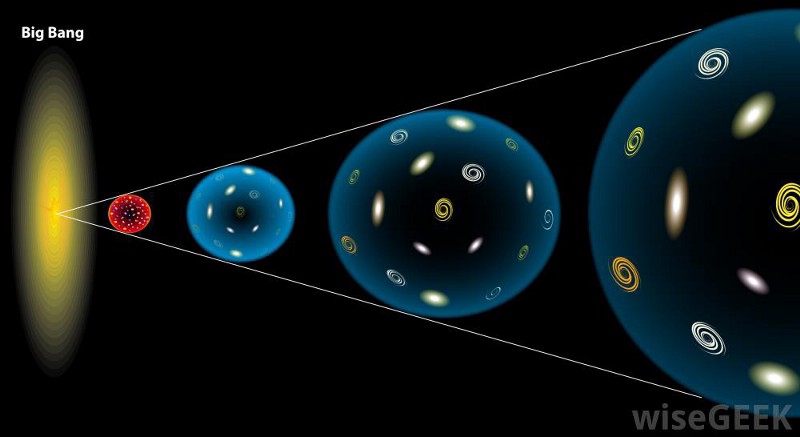
But only this hot and dense state harbors many questions, including:
• Why are very remote, different regions of space that could not exchange information from the beginning of time, filled with the same density of matter and radiation of the same temperature?
')
• Why would the Universe recollapse, if it had more substance, or would expand to the state of non-existence, if it had less substance, so perfectly balanced?
• And where, if the Universe used to be in a very hot and dense state, all these high-energy relic particles (such as magnetic monopoles), which theoretically should be easy to detect today?
The answers to the questions were found in late 1979, early 1980, when Alan Guth put forward the theory of cosmic inflation.
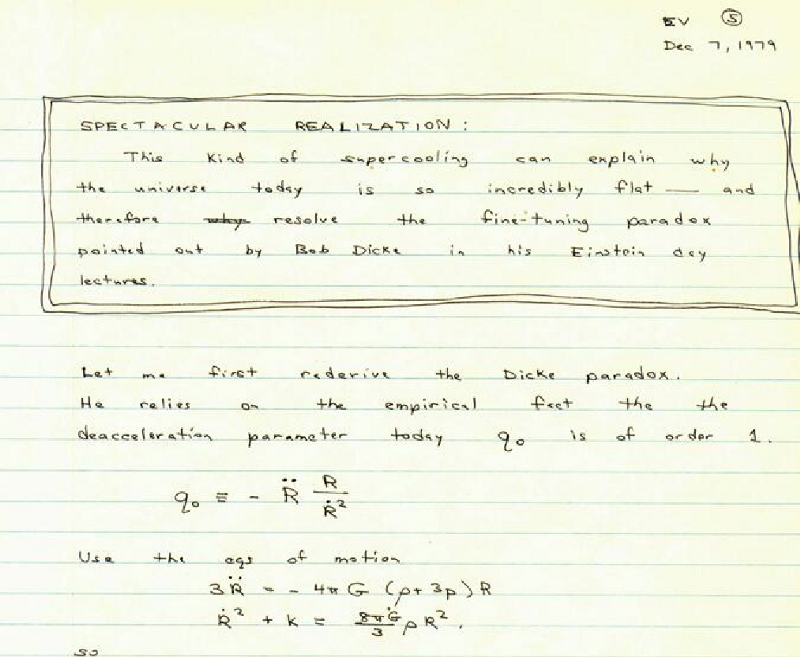
Having accepted that the Big Bang was preceded by a state in which the Universe was not filled with matter and radiation, but only with a large amount of energy inherent in the fabric of the cosmos itself, Guth was able to solve all these problems. In addition, in 1980, there were other developments that made it possible to find new classes of models that help inflationary models reproduce the current Universe:
• filled with substance and radiation,
• isotropic (the same in all directions),
• homogeneous (the same at all points),
• hot, dense and expanding in the initial state.
Such models were developed by Andrey Linde, Paul Steinhart, Andy Albrecht, and additional details were worked out by Henry Tye, Bruce Allen, Alexey Starobinsky, Michael Turner, David Schramm, Rocky Kolb and others.
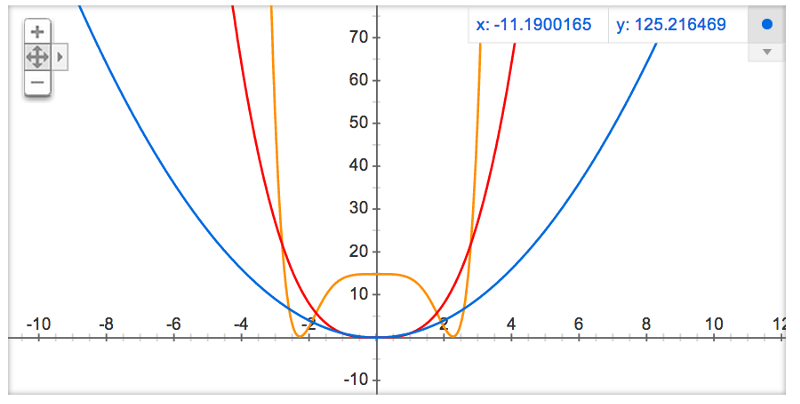
We found something remarkable: two generalized classes of models gave us everything we needed. There was a new inflation, with the potential flat at the top, from which the inflationary field could “slowly roll” to the bottom, and there was chaotic inflation with a U-shaped potential, from which it was also possible to slowly roll.
In both cases, the space expanded exponentially, straightened, its properties were the same everywhere, and when inflation ended, you returned to the Universe, very similar to ours. In addition, you received five additional predictions, observations of which at that time were not yet.
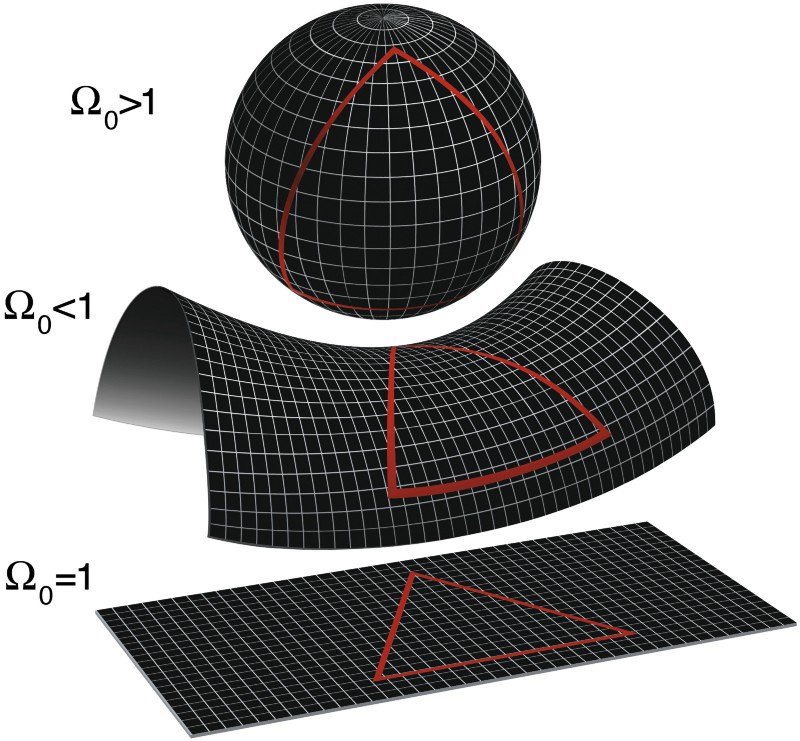
1) Flat Universe. In the early 1980s, we completed a survey study of galaxies, galactic clusters, and began to understand the large-scale structure of the universe. Based on what we saw, we were able to measure two indicators:
• The critical density of the Universe, that is, the density of matter necessary for the perfect balance of the Universe between the recollapse and perpetual expansion.
• The real density of matter in the Universe, not only luminous matter, gas, dust and plasma, but all sources, including dark matter, which has a gravitational effect.
We found that the second indicator ranged from 10% to 35% of the first, depending on the data source. In other words, the matter in the Universe was much less than a critical amount - which means that the Universe is open.
But inflation predicted a flat universe. It takes the Universe of any shape and stretches it to a flat state, or, at least, to a state indistinguishable from a flat one. Many people tried to build inflation models that gave the Universe of negative curvature (open), but did not succeed.

With the advent of dark energy as a result of observing a supernova in 1998, followed by data collection in the WMAP project, first published in 2003 (and data from the Boomerang project, released a little earlier), we came to the conclusion that the Universe is actually flat , and the reason for the low density of matter was the presence of this new, unexpected form of energy.
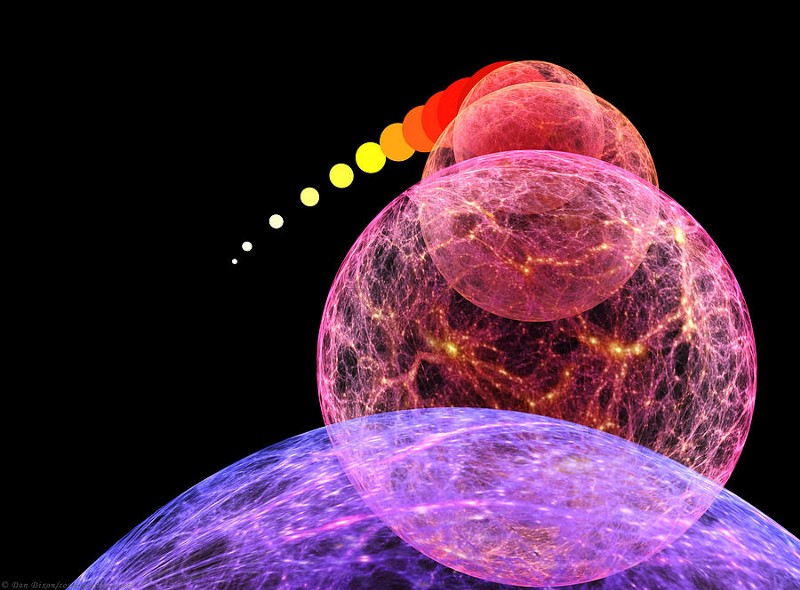
2) The Universe with fluctuations on scales larger than light is able to overcome. Inflation — forcing the space of the universe to expand exponentially — inflates what happens on very small scales to very large ones. Today's Universe has inherent uncertainty at the quantum level, small energy fluctuations occurring due to the Heisenberg uncertainty principle.
But during inflation, these small-scale energy fluctuations were supposed to stretch across the whole Universe to giant macroscopic scales, stretching along its entire length! (In general, and even further, because we can not observe anything that lies outside the observed Universe).

But having looked at the relic radiation fluctuations on the largest scale, which the COBE project was able to do to some extent in 1992, we discovered these fluctuations. And with the improved results from WMAP, we were able to measure their magnitude and see that they match the predictions of inflation.
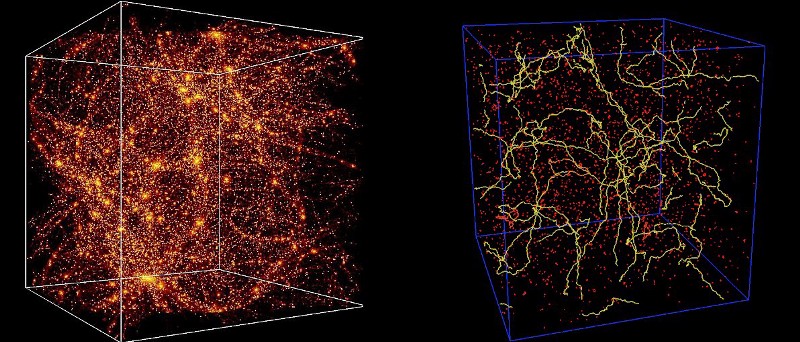
3) Universe with adiabatic fluctuations, that is, with the same entropy everywhere. Fluctuations can be different: adiabatic, constant curvature, or a mixture of both types. Inflation predicted 100% adiabatic fluctuations, and this meant the presence of well-defined parameters of the CMB, which could be measured in WMAP, and large-scale structures, measured in 2dF and SDSS projects. If relic radiation and large-scale fluctuations are related to each other, they are adiabatic, and if not, they may be of constant curvature. If there were another set of fluctuations in the universe, we would not know about it until 2000!
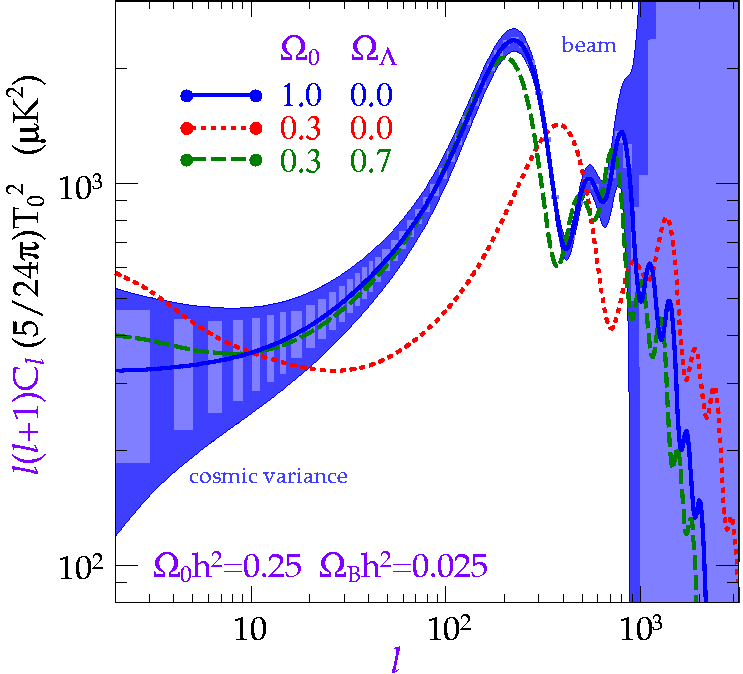
But this point was so taken for granted, thanks to the remaining successes of the theory of inflation, that its confirmation passed almost unnoticed. It was simply a confirmation of what we already “know,” although in reality it was as revolutionary as everyone else.
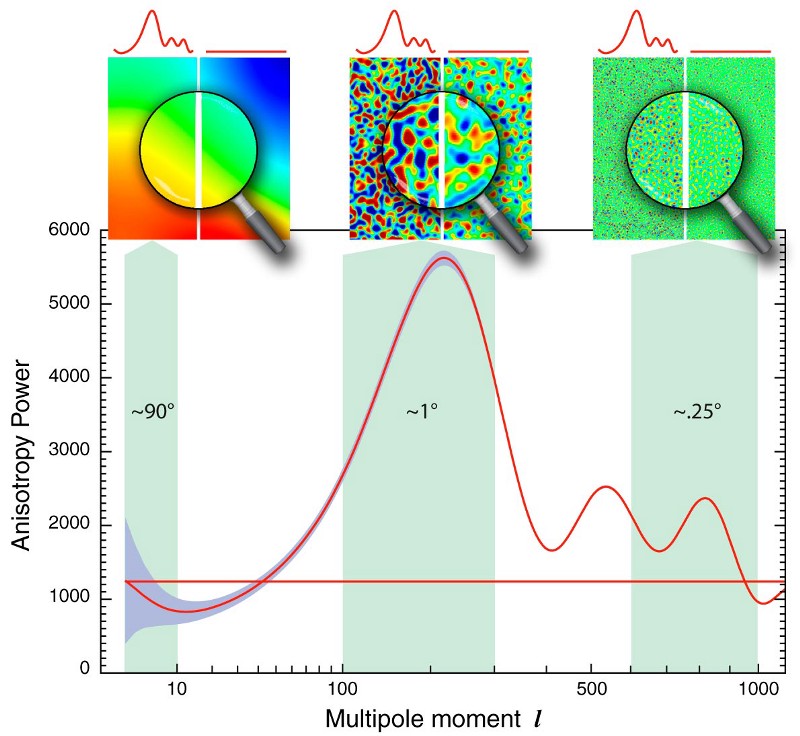
4) The Universe, in which the fluctuation spectrum was slightly smaller than that of the scale-invariant (n s <1). This is a serious prediction! Of course, inflation generally predicts that fluctuations should be scale-invariant. But there is a catch, or a refinement: the shape of inflationary potentials influences how the fluctuation spectrum differs from the ideal scale invariance.
Working models, discovered in the 1980s, predicted that the fluctuation spectrum (scalar spectral index, n s ) should be slightly less than 1, somewhere between 0.92 and 0.98, depending on the model used.
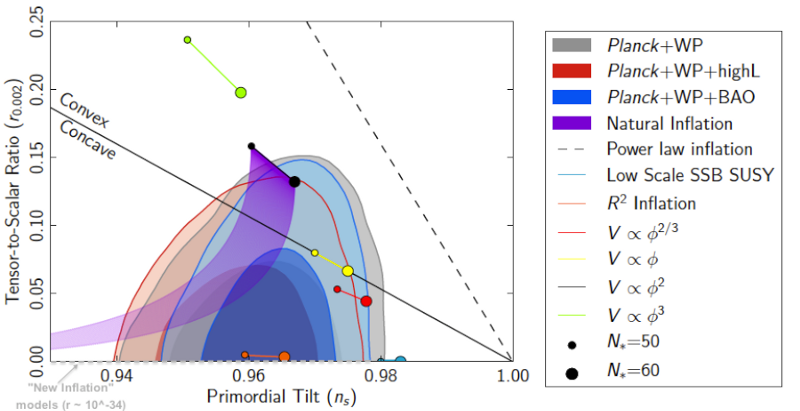
When we obtained observational data, we found that the measured quantity, n s , is approximately 0.97, with an error (as measured by relic radiation by the BAO project) of 0.012. For the first time, they were noticed in WMAP, and this observation was not only confirmed, but also reinforced by others over time. It really is less than one, and this prediction was made only by inflation.
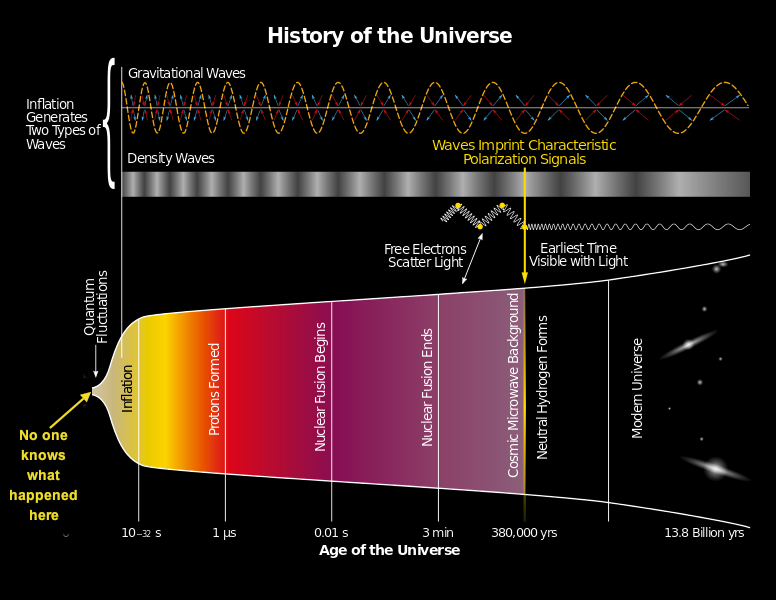
5) And finally, the Universe with a certain spectrum of fluctuations of gravitational waves. This is the last prediction, the only major one that has not yet been confirmed. Some models — for example, the Linde model of chaotic inflation — produce gravitational waves of a large size (BICEP2 should have noticed such waves), others, for example, the Albrecht-Steinhard model, can produce quite small gravity waves.
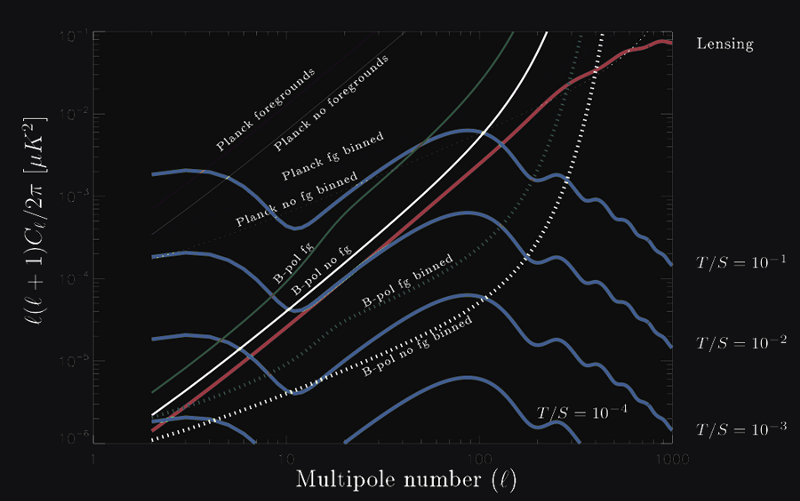
We know what their spectrum should be, and how these waves interact with fluctuations in the polarization of the microwave background radiation. Uncertainty is only in their power, which may be too small to observe, depending on which inflation model is correct.
Think about it the next time you read an article about the speculative nature of the theory of inflation, or about how one of the founders of the theory doubts its truthfulness. Yes, people try to find holes in the best theories and look for alternatives; we, scientists, are doing this.
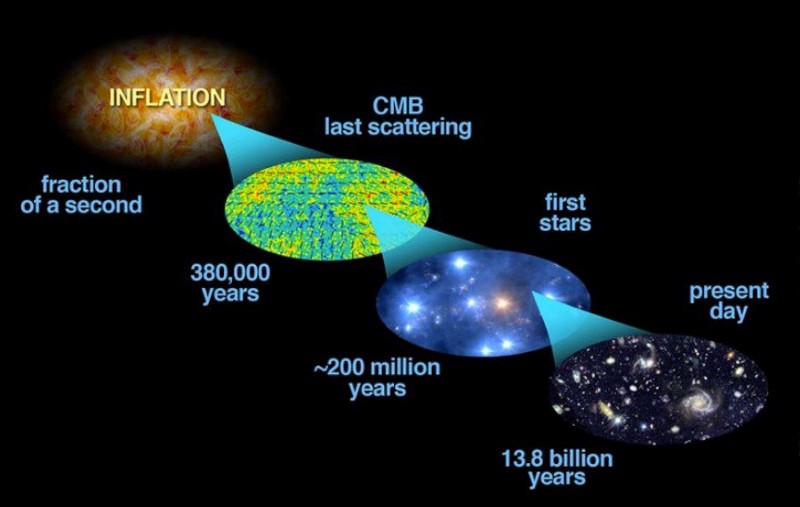
But inflation is not a theoretical monster cut off from observation. She made five new predictions, four of which we confirmed! She may have predicted such things that we do not yet know how to check, such as the multiverse, but this does not take away her success.
The theory of cosmic inflation is no longer speculative. Thanks to observations of the CMB and large-scale structures of the Universe, we were able to confirm its predictions. This is the first of all events that happened in our Universe. Cosmic inflation occurred before the Big Bang and prepared everything for its appearance. And perhaps we can still learn a lot from her!
Source: https://habr.com/ru/post/399505/
All Articles